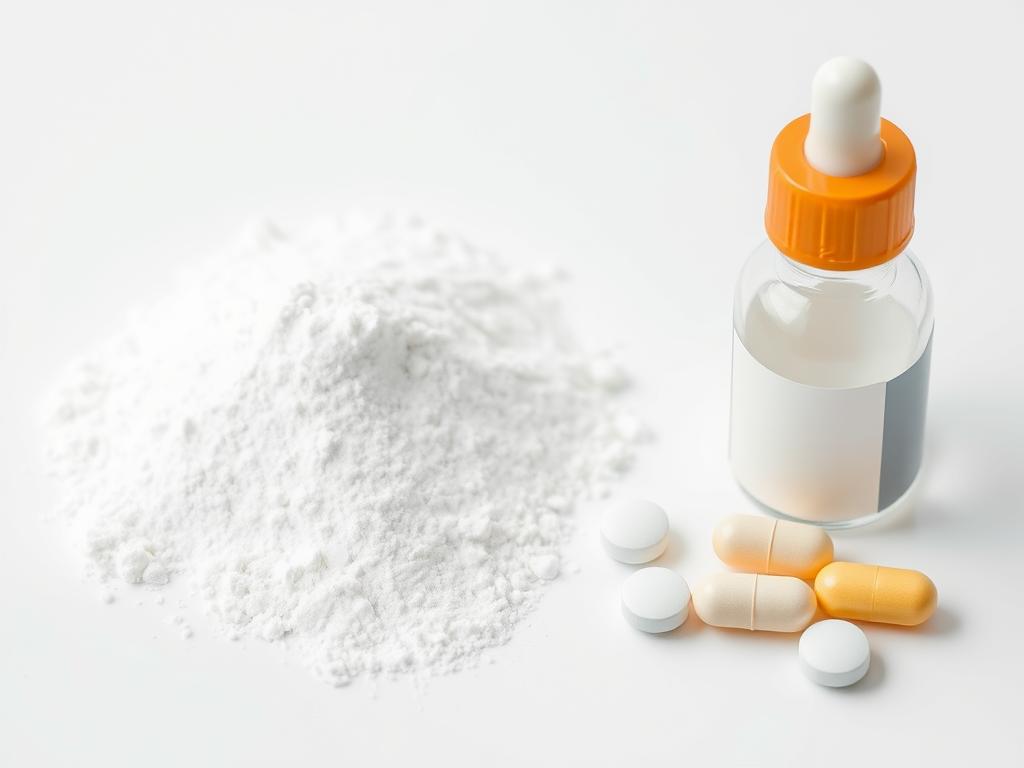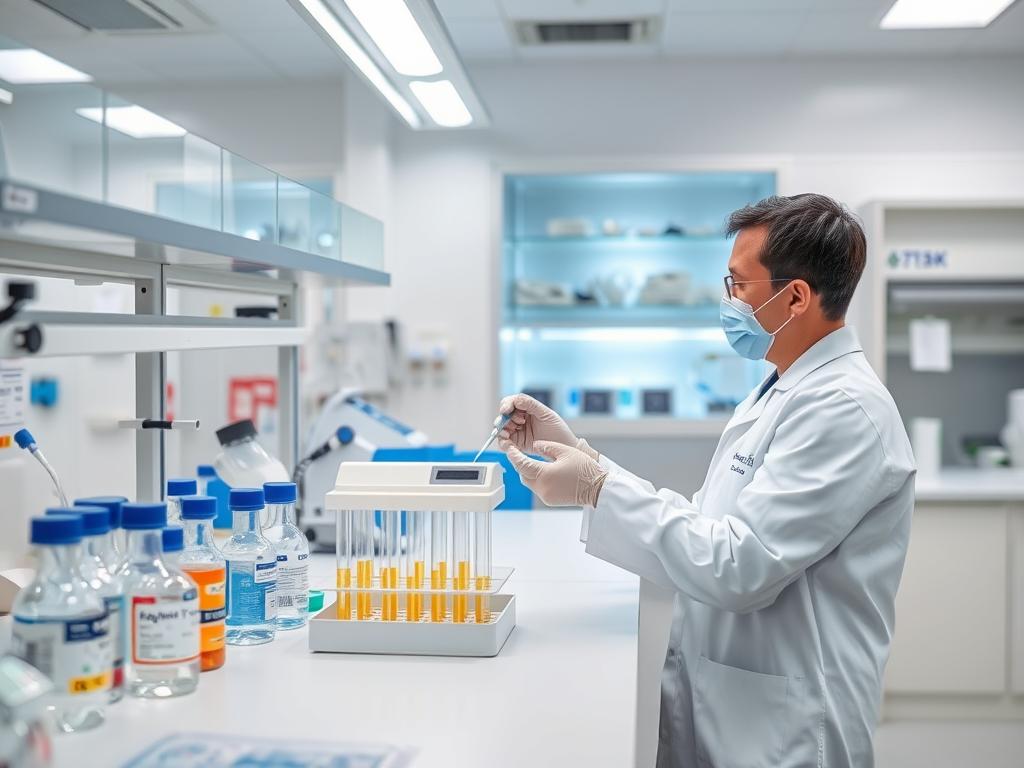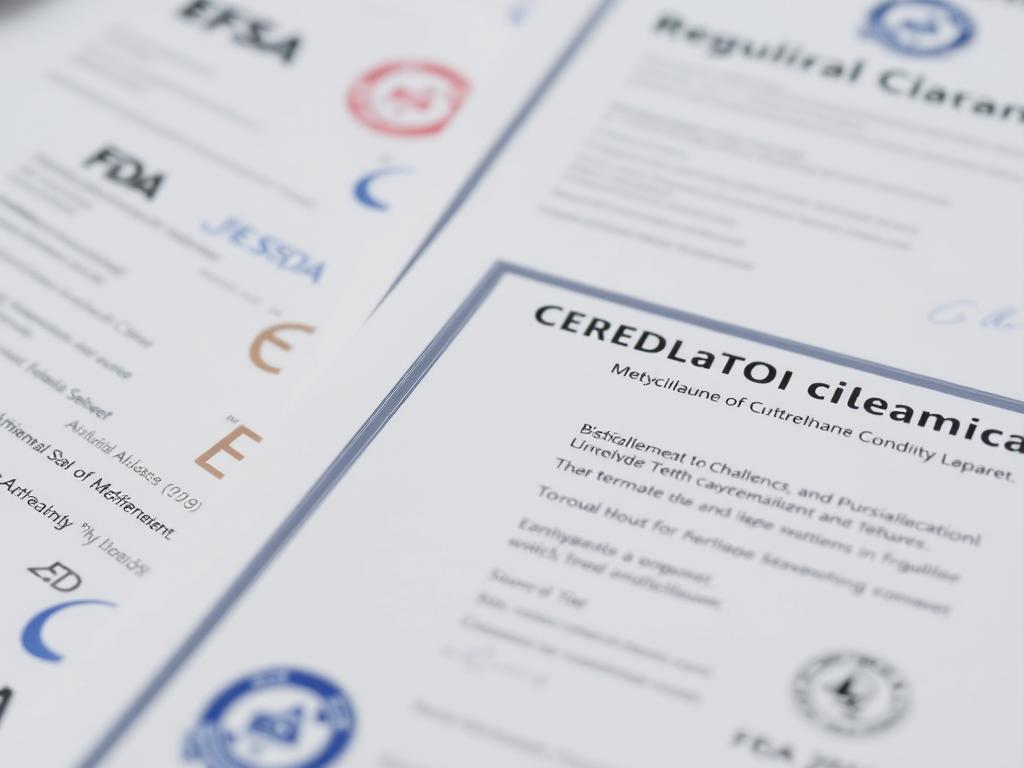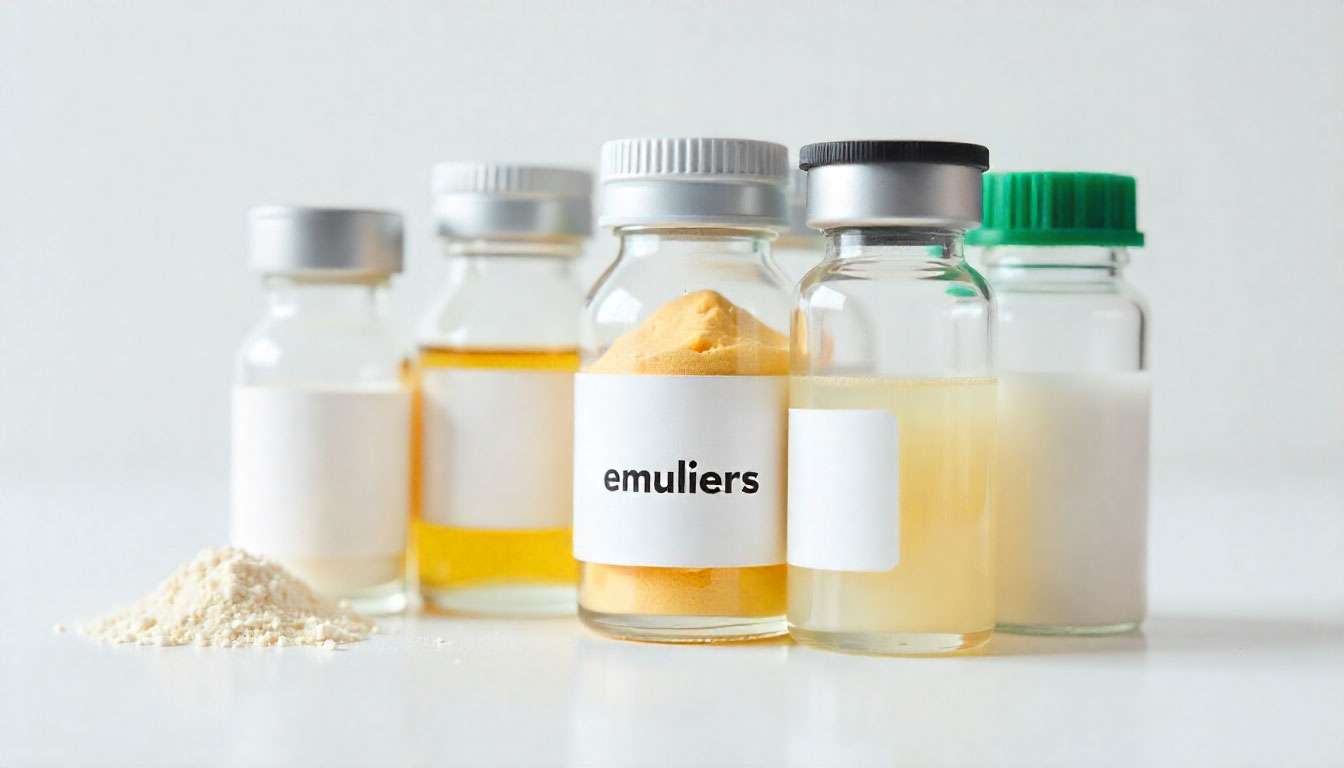
Methylcellulose: A Comprehensive Guide to This Versatile Compound
SUBSCRIBE TO OUR BLOG
Promotions, new products, and recipes.
Methylcellulose stands as one of the most versatile compounds used across multiple industries today. From food products and pharmaceuticals to construction materials and personal care items, this modified cellulose derivative plays crucial roles in countless applications. This guide explores methylcellulose's properties, uses, safety profile, and environmental considerations to provide you with a complete understanding of this remarkable substance.
What Is Methylcellulose? Definition and Chemical Composition
Methylcellulose is a chemical compound derived from cellulose, the most abundant organic polymer on Earth found in plant cell walls. It's created through a chemical process where some of the hydroxyl groups in cellulose are replaced with methoxy groups through methylation. This modification transforms the natural cellulose into a compound with unique properties that make it valuable across numerous industries.
Chemical Structure
The chemical formula for methylcellulose is often represented as C6H7O2(OH)x(OCH3)y where x + y = 3. The degree of substitution (DS) – the average number of methoxy groups attached to each glucose unit – typically ranges from 1.4 to 2.0, determining many of the compound's properties.
Physical Properties
- White powder or granules in dry form
- Forms a clear gel when dissolved in cold water
- Exhibits unique thermal gelation (solidifies when heated)
- Viscosity varies based on concentration and molecular weight
- Soluble in cold water but insoluble in hot water
- Non-ionic character makes it compatible with many substances
Common Applications of Methylcellulose
Methylcellulose's unique properties make it an invaluable ingredient across multiple industries. Its ability to form gels, bind ingredients, retain moisture, and create stable emulsions has led to widespread adoption in food production, pharmaceuticals, construction, and personal care products.

Food Industry
In food products, methylcellulose serves as an emulsifier, thickener, and stabilizer. It's particularly valuable in:
- Gluten-free baked goods (improves texture and moisture retention)
- Plant-based meat alternatives (provides binding and "meaty" texture)
- Ice cream and frozen desserts (prevents ice crystal formation)
- Sauces and dressings (stabilizes emulsions and improves mouthfeel)
Dow Chemical's Methocel™ F50 is widely used in the food industry for its consistent performance in various food applications.

Pharmaceuticals
The pharmaceutical industry relies on methylcellulose for multiple purposes:
- Tablet binding and extended-release formulations
- Ophthalmic solutions (artificial tears)
- Laxatives and digestive aids
- Suspending agent for liquid medications
- Capsule manufacturing

Construction
In building materials, methylcellulose improves workability and performance:
- Tile adhesives (improves water retention and open time)
- Cement-based renders and plasters (enhances workability)
- Joint compounds (improves consistency and reduces cracking)
- Paints (thickens water-based formulations)
Ashland's Culminal™ methylcellulose products are specifically formulated for construction applications, improving water retention in cement-based materials.
Personal Care Products
Methylcellulose appears in numerous personal care items:
- Shampoos and conditioners (thickening agent)
- Skin creams and lotions (stabilizer and texture enhancer)
- Toothpaste (binding agent and texture modifier)
- Makeup products (film-former and stabilizer)
Other Applications
The versatility of methylcellulose extends to many other uses:
- Textile printing (thickener for dyes)
- Paper manufacturing (surface sizing agent)
- Ceramic processing (binder and plasticizer)
- 3D printing (bioprinting medium)
- Agricultural products (seed coatings and soil amendments)

Looking for industry-specific applications?
Our specialized guides provide detailed information for each sector.
Methylcellulose vs. Similar Compounds
Methylcellulose belongs to a family of cellulose derivatives, each with unique properties and applications. Understanding the differences between these compounds helps in selecting the most appropriate one for specific uses.
| Property | Methylcellulose | Hydroxypropyl Methylcellulose (HPMC) | Carboxymethyl Cellulose (CMC) |
| Chemical Structure | Methyl groups replace hydroxyl groups | Contains both methyl and hydroxypropyl groups | Carboxymethyl groups replace hydroxyl groups |
| Water Solubility | Soluble in cold water, forms gel when heated | Better solubility in both hot and cold water | Highly soluble in water at all temperatures |
| Gel Formation | Strong thermal gelation (gels when heated) | Weaker thermal gelation than MC | No thermal gelation |
| Surface Activity | Moderate surface activity | Higher surface activity than MC | Low surface activity |
| Primary Applications | Food, pharmaceuticals, construction | Extended-release medications, eye drops | Food thickener, paper products, detergents |
Hydroxypropyl Methylcellulose (HPMC)
HPMC, also known as hypromellose, is a semi-synthetic derivative of methylcellulose. The addition of hydroxypropyl groups improves its solubility in various solvents and provides better stability in the presence of electrolytes. HPMC is widely used in pharmaceutical formulations, particularly for controlled-release tablets and as a main ingredient in artificial tears.

Carboxymethyl Cellulose (CMC)
CMC differs from methylcellulose in that it contains carboxymethyl groups attached to hydroxyl groups of the cellulose backbone. This gives CMC an anionic character, making it more reactive with positively charged molecules. CMC is commonly used in food products as a stabilizer, in paper manufacturing to improve strength, and in detergents to prevent soil redeposition.

Safety Profile and Regulatory Status
Methylcellulose has undergone extensive safety testing and is regulated by various authorities worldwide. Understanding its safety profile and regulatory status is essential for manufacturers and consumers alike.
Safety Assessment
Methylcellulose is generally recognized as safe (GRAS) by the U.S. Food and Drug Administration (FDA). Toxicological studies have shown that methylcellulose:
- Is not metabolized by the human body
- Passes through the digestive system largely unchanged
- Shows no evidence of carcinogenicity
- Has minimal potential for allergic reactions
- Demonstrates low toxicity in both acute and chronic exposure scenarios

Regulatory Status
Methylcellulose is approved for use in food, pharmaceuticals, and personal care products by major regulatory bodies:
- FDA: Approved as food additive (E461) and pharmaceutical excipient
- European Food Safety Authority (EFSA): Authorized food additive
- Joint FAO/WHO Expert Committee on Food Additives (JECFA): Established acceptable daily intake (ADI) as "not specified"
- Health Canada: Permitted food additive and non-medicinal ingredient in drugs

Safety Advantages
- Non-toxic and non-allergenic for most people
- Not absorbed by the body
- No known carcinogenic properties
- Extensive history of safe use
- Biodegradable and environmentally friendly
Potential Concerns
- May cause bloating when consumed in large amounts
- Can act as a laxative in some individuals
- Potential for drug interactions when used in pharmaceuticals
- Some consumers prefer "natural" alternatives
Biodegradability
Methylcellulose is derived from cellulose, a naturally occurring polymer, and retains many of its biodegradable properties. Studies have shown that methylcellulose:
- Is biodegradable in both aerobic and anaerobic environments
- Breaks down into carbon dioxide, water, and biomass
- Degrades faster in soil environments with active microbial populations
- Biodegradation rates vary based on degree of substitution (higher methoxyl content can slow degradation)

Production Considerations
The environmental impact of methylcellulose extends to its production process:
- Raw material (cellulose) comes from renewable plant sources
- Chemical modification process requires energy and chemicals
- Modern production methods have reduced solvent use and emissions
- Water consumption during manufacturing has decreased with process improvements
- Leading manufacturers like Shin-Etsu Chemical have implemented sustainable production practices

Sustainability Initiatives
Major methylcellulose manufacturers have implemented sustainability programs to reduce environmental impact:
- Dow Chemical's 2025 Sustainability Goals include reducing energy use in methylcellulose production by 15%
- Ashland's Responsible Solvers™ program focuses on sustainable sourcing of cellulose
- Shin-Etsu Chemical has achieved ISO 14001 certification for environmental management at its methylcellulose facilities
Future Trends in Methylcellulose Usage
The methylcellulose market continues to evolve with new applications and technological advancements. Several key trends are shaping the future of this versatile compound across industries.

Expanding Plant-Based Food Market
The growing demand for plant-based meat alternatives is driving increased use of methylcellulose as a critical binding agent. Companies like Beyond Meat and Impossible Foods rely on methylcellulose to create the texture and mouthfeel that mimics animal products. Market analysts project continued growth in this sector, with methylcellulose playing a key role in next-generation plant-based foods.

Advanced Drug Delivery Systems
Pharmaceutical researchers are developing innovative drug delivery systems using methylcellulose and its derivatives. These include targeted-release formulations, 3D-printed medications with precise dosing, and combination with nanomaterials for enhanced efficacy. The ability to control drug release rates makes methylcellulose particularly valuable in personalized medicine applications.

Biomedical Applications
Methylcellulose is finding new applications in biomedical fields, particularly in tissue engineering and regenerative medicine. Its biocompatibility and tunable properties make it an excellent scaffold material for cell growth. Researchers are using methylcellulose-based hydrogels as bioinks for 3D bioprinting of tissues and organs, opening new possibilities in personalized medicine.
Sustainable Packaging Solutions
As the world moves away from petroleum-based plastics, methylcellulose is emerging as a component in biodegradable packaging materials. When combined with other natural polymers, it can create films and coatings that provide barrier properties while remaining environmentally friendly. Companies like Novamont are incorporating methylcellulose derivatives into their biodegradable packaging solutions.

Green Building Materials
The construction industry is increasingly focused on sustainable building materials. Methylcellulose enhances the performance of eco-friendly construction products like low-VOC paints, natural plasters, and alternative cement formulations. Its ability to improve workability while reducing the need for synthetic additives makes it valuable in green building certification programs.

Conclusion
Methylcellulose stands as a remarkable example of how modifying natural materials can create versatile compounds with wide-ranging applications. From its crucial role in food products and pharmaceuticals to its emerging applications in cutting-edge fields like bioprinting and sustainable packaging, methylcellulose continues to demonstrate its value across industries.
As consumer preferences shift toward natural, sustainable products, methylcellulose offers a balance between performance and environmental responsibility. Its biodegradability, renewable source material, and safety profile position it well for continued growth in an increasingly eco-conscious marketplace.
Whether you're a manufacturer considering methylcellulose for your formulations, a researcher exploring new applications, or simply curious about this common ingredient, understanding its properties and potential helps inform better decisions about its use and development.

Frequently Asked Questions About Methylcellulose
Is methylcellulose safe to consume?
Yes, methylcellulose is generally recognized as safe (GRAS) by the FDA and other regulatory agencies worldwide. It passes through the digestive system largely unabsorbed and has been extensively tested for safety. It's approved for use in food products as the food additive E461 and has a long history of safe consumption. Some individuals may experience mild digestive effects like bloating when consuming large amounts, but this is not considered harmful.
What makes methylcellulose different from other cellulose derivatives?
Methylcellulose is unique among cellulose derivatives for its reverse thermal gelation property—it forms a gel when heated rather than when cooled. This distinguishes it from hydroxypropyl methylcellulose (HPMC), which has weaker thermal gelation, and carboxymethyl cellulose (CMC), which doesn't exhibit thermal gelation. Methylcellulose also has different solubility characteristics, being soluble in cold water but forming a gel in hot water, while some other derivatives remain soluble at all temperatures.
Why is methylcellulose used in plant-based meat alternatives?
Methylcellulose serves several critical functions in plant-based meat alternatives. Its primary role is as a binding agent that holds plant proteins together, creating a cohesive texture similar to animal meat. Additionally, its unique thermal gelation properties—becoming firmer when heated—mimics how meat proteins coagulate during cooking. This helps plant-based products maintain their structure and provide the satisfying mouthfeel consumers expect. It also helps retain moisture during cooking, preventing the products from becoming dry.
Is methylcellulose environmentally friendly?
Methylcellulose is considered relatively environmentally friendly compared to many synthetic polymers. It's biodegradable in both soil and aquatic environments, breaking down into carbon dioxide, water, and biomass. The raw material (cellulose) comes from renewable plant sources, typically wood pulp or cotton linters. However, the chemical modification process does require energy and chemicals, so its overall environmental impact depends on manufacturing practices. Many producers have implemented more sustainable production methods to reduce environmental footprint.
What are the differences between food-grade and pharmaceutical-grade methylcellulose?
Pharmaceutical-grade methylcellulose adheres to stricter purity standards than food-grade versions. It must comply with pharmacopeia specifications (USP, EP, JP) that define acceptable limits for impurities, heavy metals, and microbiological contaminants. Pharmaceutical grades often have more tightly controlled viscosity ranges and substitution patterns to ensure consistent performance in drug formulations. Food-grade methylcellulose, while still regulated for safety, may have broader specification ranges and different testing requirements focused on food safety rather than pharmaceutical performance.

|
About the Author Ed is the founder of Cape Crystal Brands, editor of the Beginner’s Guide to Hydrocolloids, and a passionate advocate for making food science accessible to all. Discover premium ingredients, expert resources, and free formulation tools at capecrystalbrands.com/tools. — Ed |
Enjoyed this post? Subscribe to The Crystal Scoop
Food-science tips, ingredient know-how, and recipes. No spam—unsubscribe anytime.
- Choosing a selection results in a full page refresh.



